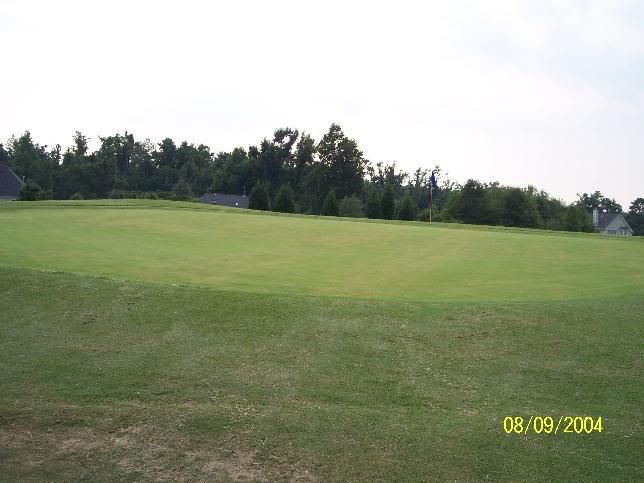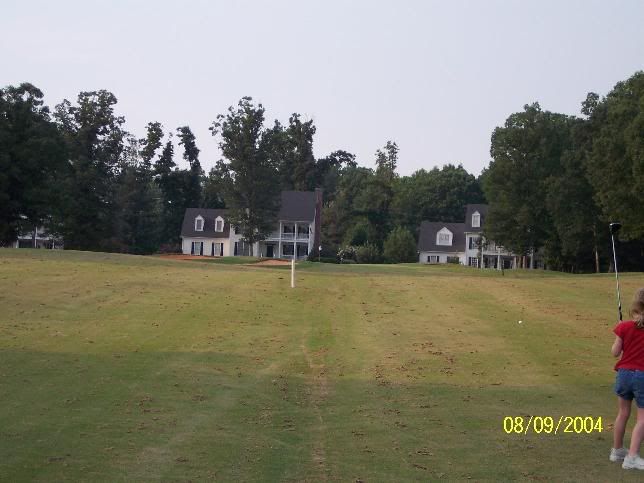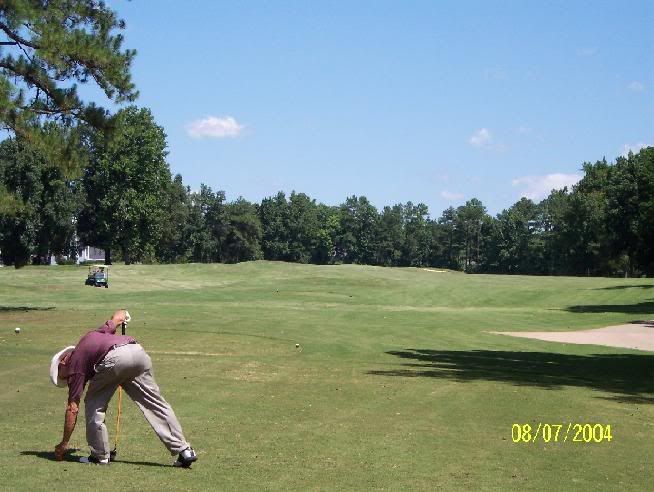One year ago today, my former home course of 12 years, Wake Forest GC in WF, NC, closed
for good. I was one of the last people to play there (finishing after sunset). Also 1 year ago
today, not long after that last round, I finally submitted my years-in-the-making My Home
Course piece to GCA (as you'll see, the pics were taken more than 3 years before the
submission, and the text was written and re-written in my head for about 6 years, and finally
put to paper in 2007). I was told it would be posted some time after GCA's software upgrade
in early 2008. After another MHC piece was published in mid-2008 (after being submitted 5
months after mine), I realized that my piece was not accepted.
So as to not completely distinguish all the effort it took to finally get it done, I wanted to post
it as a (soon-to-be-forgotten) thread on the 1 year anniversary of the course's closure.
Keep in mind, this was written in present tense while the course was still open, and Tommy
Byrne passed away 5 weeks after this was submitted.
Wake Forest Golf Club
Wake Forest, North Carolina
Architect: Gene Hamm, 1968
History: WFGC was built during the ‘Dark Ages’ of design, in 1968, and was designed by regional
architect Gene Hamm. After playing several of Gene Hamm’s designs (who did several in the Pinehurst
and Myrtle Beach areas), I would describe him as similar to other mid-Atlantic regional architects of
that time, such as George Cobb and Ellis Maples, whose routings are often solid, but bunkering and
details are often uninspired. WFGC has gone through a few name changes, from starting out as
Horse Creek CC, named after the creek that bisects the property and is in play on 5 holes, to Wake
Forest Golf & CC, to the present WFGC, intact for at least 12 years. The club has always been semi-
private.
The club was started by former Major League Baseball player, one-time Yankee fireballer Tommy
Byrne, who still lives off one of the holes on the course, and is a lifetime member, not to mention a
former mayor of the town of WF. The current layout is not all original. Holes 2-5 were redesigned
significantly after the current owner sold off the land around these holes for a housing development.
Hole #2 is mostly the same, the 2nd half of #5 is the same, but #3 and #4 are completely new holes
in different locations.
The first hole is the ‘signature’ hole and locally famous, as it once was the world’s longest par 5, at
711 yards. The opening stretch of holes is the toughest stretch on the course, which often makes for
a demoralizing start. Who wants to start off with a narrow, 711-yard par 5 with a creek in the 2nd
shot landing area? Supposedly, the nines were reversed years ago, possibly to highlight the lengthy
hole as an opener. I try to start on #10, a downhill, 400-yard par 4, as often as possible in
recreational rounds.
The land the course sits on is rolling-to-hilly in spots, with a few creeks and man-made ponds in play,
where all but 3 holes have elevation change, and one of these 3 is because of the re-do of holes #3-
4. The layout is easily walkable, with only a few somewhat large walks created by the re-do.
Hole-By-Hole:
#1: par 5, 711 yards
The Signature Hole, once the World’s Longest Par 5 (since surpassed several times). This ominous
sign greets those playing from the back tee:

From the back tee, the hole is basically a gimmick, since most players have to lay short of the creek on
the 2nd shot, save for the super long who pure it. The opening tee shot plays downhill for the first
300 yards (though the final 150 go up).

From the other tees, it’s a pretty good risk/reward hole, as two decent shots can clear the creek in 2,
leaving 120-150 in to this uphill approach to a skyline green:

Without 2 solid shots, one is left with a 200+ yard shot that is all uphill:

Once over, the trouble is not over, as the 2-tiered green is small and sloped from back to front.

#2: par 4, 438 yards
Tied for the longest par 4 on the course, it plays longer, especially from the tips, where the landing
area is uphill-sloped, reducing roll.

This starts the four-hole section altered by the housing development, although this holes was
changed the least. Due to the housing, there is OB lining both sides. The uphill landing area slops at
about 150 yards in, so approaches on drives not perfectly struck may not be able to see the putting surface.

On the approach, the green is angled from front right to back left, with this nice fronting bunker on the left side:

#3 par 3, 143 yards
The start of the two “Florida holes”, as I call them, due to the housing, mostly flat land, OB, and water
features involved.

This short, slightly downhill par 3 grew on me through the years. The housing is on top of you, but it
has an interesting raised, two-tiered green that falls off on all sides, including the water on three sides.

The longest walk on the course is from #3 to #4, entirely due to the housing changes.
#4: par 4, 347 yards
This short par 4 requires a precise iron off the tee, fade preferred around the tight dogleg right.

A creek goes down the entire right side, and a pond is down the left side from 100 yards in, tight by
green. The difficulty on this hole is mostly on the approach…

which is to the narrowest green this side of Myopia. Just 8-9 yards wide for the front 2/3, the rear 1/3
opens up another 5 yards.

Water is tight left, a bunker right, and missing farther right leaves a difficult pitch across the narrow
width of the green with water long.
#5: par 4 398 yards?
Once a straight-ahead 4, the ‘new’ dogleg right demands a fade off the tee…

to shorten the approach, which must clear a pond 5 steps from the green:

#6: par 3 183 yards
An otherwise boring, flat par 3...

it has two buried elephants in the left 1/3 of the green…

essentially negating any pin placements there other than an occasional rear setting just behind the mounds.
#7: par 4 317 yards
An otherwise boring, flat short par 4 is made interesting only in that it is occasionally drivable by long hitters.

The green is open in front, despite four bunkers around it, making it the easiest hole on the course.

The ball on the green was a second attempt to drive it, showing that it is indeed drivable, even by mortals.
#8: par 4 421 yards
A straight-away, mid-long par 4, is made a little longer by the slight uphill grade.

The approach is to a green with a flattish elephant buried in the middle of the green, adding some interest.

#9: par 5, 575 yards
The prettiest hole on the course from the (elevated) tee…

it is generally not reachable, despite the downhill tee shot. The landing area is often wet/soft, and
the hole goes significantly uphill for the final 300 yards…

(parallel to the opening hole tee shot) to a well-sloped, two-tiered green with a nice fronting bunker:


beneath the clubhouse and practice green.